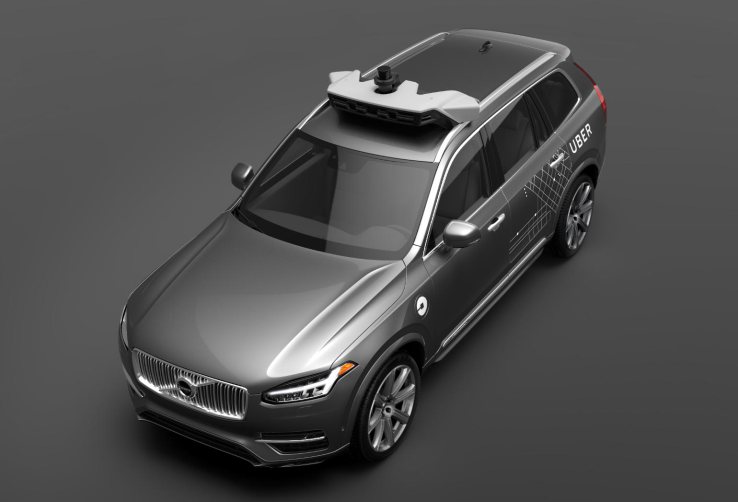

Uber revealed today that it would put self-driving Volvo SUVs on the road in Pittsburgh, picking up actual passengers, with a driver on board only to make sure everything goes smoothly. It’s a launch of near-complete autonomous vehicles that seemed to come out of nowhere – just like Uber itself.
In Bloomberg’s telling of the launch of Uber’s self-driving program, they note that Uber starting road-testing their vehicles in May, something the company has managed to keep under wraps until now. Uber also formed its self-driving business in earnest only a little over one year ago, in January 2015 with the hire of John Bares and employees reporting to him. The apparent goal was to replace its human drivers with robots in as short a time as possible, which Bloomberg says could be interpreted by some as “audacious, even reckless.”
But “audacious, even reckless” is what Uber is good at. The company’s e-hailing business usurped a U.S. taxi industry with a near monopoly on city-based ride-for-hire services with a speed that many would’ve thought impossible at the time, too; Uber was founded in 2009, and launched officially in SF in 2011. Over the course of 2012 and 2013, it quickly spread across the U.S. and into a good chunk of major international urban cities.
Uber’s expansion in its early days is remarkable for a few reasons – one, because building this kind of offering in new cities means having local resources, and is far more friction-heavy than expanding availability of say, a social app. And two, because Uber faced pushback from legacy taxi industry players, including lobby groups, and from local lawmakers and regulators.
Much of the company’s ability to leap over obstacles early on, and get out ahead of competitors including Lyft and Hailo, can probably be ascribed to CEO Travis Kalanick’s take-no-prisoners, move-fast-and-break-things attitude. I’d add ‘ask for forgiveness, not permission,’ but Kalanick rarely seemed interested in the former during the early days.
While Kalanick has smoothed out some of his rougher edges in the intervening years as Uber has grown to massive scale, a quote from the Bloomberg piece reminds us how he built the company into what it is today – “We are going commercial. This can’t just be about science.”
‘Damn the risks’ is a very bold way to go about developing self-driving tech, especially in a world where Tesla faces a lot of scrutiny from regulators and customers about a vehicle death involving it’s Autopilot autonomous highway driving features. But Uber will be Uber, and that could be very beneficial in terms of speeding up the ultimate arrival of self-driving cars on actual roads.
Uber’s approach with building its basic e-hailing service has been all about taking action, and doing so quickly without waiting for competitors or the opposition to get its footing. Launching self-driving cars on city roads, picking up actual passengers by the end of 2016? That’s just a natural extension of the Uber way.

